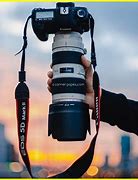Photography Evolved: The Best Camera Innovations of the Year
The world of photography is constantly evolving, with new innovations hitting the market every year. From advancements in image sensors and autofocus to revolutionary features like AI-powered image processing and 8K video recording , the past twelve months have seen a surge in cutting-edge camera technology that has redefined the boundaries of what’s possible. It’s an exciting time to be a photographer, and it’s even more exciting to witness the leaps and bounds made by camera manufacturers in their quest to deliver the best possible experience for users.
But with so many new products and features hitting the market , it can be difficult to keep track of the most significant advancements. That’s where this article comes in, offering an overview of the top camera innovations that have made waves in the world of photography.
Whether you’re a professional photographer looking for the latest gear to elevate your workflow, or an aspiring enthusiast just starting your photographic journey , this guide will provide you with the insights you need to understand what’s hot in the world of cameras.
Related Post : Tech Tips for Entrepreneurs: Tools to Boost Your Startup
Get ready to explore the latest innovations, learn about their impact on image quality, versatility , and creative possibilities , and find out how they are shaping the future of photography .
Photography Evolved: The Best Camera Innovations of the Year
Photography is constantly evolving, and 2023 has been a year of groundbreaking advancements in camera technology. From the rise of AI in photography to the innovative features of mirrorless cameras and mobile photography, the landscape of image capture is changing rapidly. Let’s delve into some of the most exciting camera innovations of the year.
The Rise of AI in Photography
Artificial intelligence (AI) is revolutionizing the way we take and edit photos. AI-powered tools are now seamlessly integrated into cameras and editing software, offering unprecedented capabilities for image enhancement and subject recognition.
AI-Powered Image Enhancement:
AI algorithms are transforming how we perceive image quality. They can analyze images, identify imperfections, and automatically adjust parameters like brightness, contrast, and color balance to create stunning results.
How AI is revolutionizing image quality:
- Noise reduction: AI can effectively reduce noise in low-light photos, resulting in cleaner and more detailed images.
- Sharpness enhancement: AI can sharpen edges and details, making images appear crisper and more defined.
- Dynamic range optimization: AI can analyze the entire image and adjust exposure levels to bring out detail in both highlights and shadows.
Examples of AI-powered image enhancement tools:
- Adobe Sensei: This AI-powered technology is integrated into Adobe Photoshop and Lightroom, providing intelligent features for image enhancement.
- Google Photos: Google Photos utilizes AI for automatic image enhancement, including features like HDR+ and portrait mode.
- Topaz Labs: Topaz Labs offers a range of AI-powered plugins for image editing, including noise reduction and detail enhancement.
Benefits of using AI for photo editing:
- Time-saving: AI automation reduces the time and effort required for editing, allowing photographers to focus on capturing moments.
- Improved results: AI algorithms can often achieve better results than manual editing, especially in areas like noise reduction and sharpness.
- Accessibility: AI-powered tools make image enhancement more accessible to photographers of all skill levels.
AI-Driven Subject Recognition:
AI is also making its mark in subject recognition, enabling cameras to identify and track subjects more accurately than ever before.
How AI helps cameras recognize subjects more accurately:
- Advanced object detection: AI algorithms can identify different subjects, including people, animals, and objects, with high accuracy.
- Real-time tracking: AI enables cameras to track moving subjects seamlessly, ensuring they remain in focus.
Improved autofocus and tracking with AI:
- Eye-detection autofocus: AI-powered cameras can detect and focus on subjects’ eyes, resulting in sharper portraits.
- Subject tracking: AI algorithms can automatically track moving subjects, ensuring they stay in focus even during fast action.
Benefits of AI-driven subject recognition for different types of photography:
- Wildlife photography: AI-powered tracking helps capture stunning images of elusive animals in motion.
- Sports photography: AI autofocus ensures sharp images of fast-moving athletes.
- Portrait photography: Eye-detection autofocus creates beautifully composed portraits with sharp focus on the eyes.
The Future of Camera Technology:
The future of camera technology is bright, with exciting innovations on the horizon. Here are some trends that are shaping the future of photography:
Mirrorless Cameras:
The rise of mirrorless cameras is one of the most significant developments in photography. These cameras offer several advantages over traditional DSLRs.
The rise of mirrorless cameras and their advantages:
- Compact and lightweight: Mirrorless cameras are generally smaller and lighter than DSLRs, making them more portable.
- Faster autofocus: Mirrorless cameras often have faster and more accurate autofocus systems.
- Advanced features: Many mirrorless cameras offer advanced features like in-body image stabilization and 4K video recording.
Key features of mirrorless cameras:
- Electronic viewfinder: Mirrorless cameras use electronic viewfinders (EVFs) to display the image in real-time.
- Hybrid autofocus: Many mirrorless cameras use a combination of phase-detection and contrast-detection autofocus for faster and more accurate focusing.
- High-resolution sensors: Mirrorless cameras are often equipped with high-resolution sensors, producing images with exceptional detail.
Examples of top mirrorless cameras on the market:
- Sony Alpha 7 IV: A versatile full-frame mirrorless camera with advanced autofocus and video features.
- Canon EOS R5: A professional-grade full-frame mirrorless camera with exceptional image quality and video capabilities.
- Olympus OM-1: A rugged and weather-sealed mirrorless camera designed for wildlife and action photography.
High-Resolution Sensors:
Cameras are now equipped with higher resolution sensors than ever before, allowing for even more detail in images.
The impact of higher resolution sensors on image quality:
- More detail: Higher resolution sensors capture more information, resulting in images with exceptional detail and clarity.
- Cropping flexibility: Higher resolution images offer more flexibility for cropping without sacrificing quality.
- Larger prints: Higher resolution sensors enable photographers to create larger prints with stunning detail.
Benefits of high-resolution cameras for professional and amateur photographers:
- Professional photographers: High-resolution cameras allow photographers to capture images that can be printed at large sizes for exhibitions and commercial use.
- Amateur photographers: Higher resolution sensors provide more flexibility for cropping and editing, allowing for more creative options.
Examples of cameras with high-resolution sensors:
- Nikon Z9: This professional-grade mirrorless camera features a 45.7 MP sensor and delivers exceptional image quality.
- Sony Alpha 1: Another professional-grade mirrorless camera with a 50.1 MP sensor, offering stunning detail and high dynamic range.
- Canon EOS R3: This high-performance mirrorless camera boasts a 24.1 MP sensor and advanced image processing capabilities.
Camera Innovations for Mobile Photography
Mobile photography has become increasingly sophisticated, with smartphones offering a wide range of features that rival traditional cameras.
Computational Photography:
Computational photography uses software algorithms to enhance the image capture process, often delivering results that were previously unattainable.
How computational photography is changing mobile photography:
- HDR (High Dynamic Range): Computational photography allows smartphones to capture multiple exposures and combine them to create images with greater detail in highlights and shadows.
- Portrait mode: Computational photography enables smartphones to create bokeh effects, blurring the background to create more professional-looking portraits.
- Night mode: AI algorithms help smartphones capture brighter and clearer images in low-light conditions.
Examples of computational photography features on smartphones:
- Apple iPhone: The iPhone features a range of computational photography features, including HDR, Deep Fusion, and Portrait mode.
- Google Pixel: Pixel smartphones are known for their exceptional computational photography capabilities, including Night Sight and Super Res Zoom.
- Samsung Galaxy: Samsung Galaxy phones offer features like Single Take, which captures multiple photos and videos with a single tap.
The impact of computational photography on image quality:
- Improved detail: Computational photography helps smartphones capture more detail in challenging lighting conditions.
- Enhanced creative control: Computational photography features provide users with more creative options for image capture and editing.
- More accessible photography: Computational photography makes high-quality photography more accessible to everyone with a smartphone.
Multi-Camera Systems:
Many smartphones now feature multiple cameras, each with different lenses and capabilities, to capture different perspectives and create unique images.
How multi-camera systems are enhancing mobile photography:
- Wide-angle lens: Wide-angle lenses allow for capturing wider scenes, ideal for landscapes and group photos.
- Telephoto lens: Telephoto lenses bring distant subjects closer, useful for capturing wildlife and sports events.
- Ultra-wide-angle lens: Ultra-wide-angle lenses capture a wider field of view than standard lenses, ideal for capturing dramatic perspectives.
Different types of lenses used in multi-camera systems:
- Main lens: This is typically the primary lens on a smartphone, often a wide-angle or standard lens.
- Telephoto lens: Telephoto lenses offer greater zoom capabilities, allowing users to capture subjects at a distance.
- Ultra-wide-angle lens: Ultra-wide-angle lenses capture a wider field of view, ideal for panoramic shots and capturing a greater sense of space.
Benefits of multi-camera systems for capturing various perspectives:
- Flexibility: Multi-camera systems offer more versatility for capturing different perspectives and compositions.
- Creative options: Users can choose the best lens for the subject and scene, allowing for greater creative control.
- Improved overall image quality: Multi-camera systems can help improve overall image quality by utilizing different lenses for different situations.
The Future of Photography:
The future of photography is filled with exciting possibilities, with technologies like lightfield cameras and holographic photography poised to revolutionize the way we capture and experience images.
Lightfield Cameras:
Lightfield cameras capture not just the light that falls on the sensor but also the direction of the light rays. This allows for greater depth and focus control after the image is captured.
The potential of lightfield cameras for capturing depth and focus:
- Focus control after capture: Lightfield cameras allow users to adjust focus after the image is taken, creating different perspectives and highlighting different elements.
- 3D image capture: Lightfield cameras can be used to capture 3D images and videos.
- Enhanced depth perception: Lightfield images provide a greater sense of depth and realism.
How lightfield cameras work and their advantages:
- Microlens array: Lightfield cameras use a microlens array to capture the direction of light rays.
- Depth information: The captured data allows for post-capture focus adjustments and 3D imaging.
Examples of lightfield cameras and their applications:
- Lytro Illum: This lightfield camera captured a great deal of attention when it was released, offering unique post-capture focus control.
- Raytrix R5: This high-resolution lightfield camera is designed for professional applications, including industrial inspection and scientific imaging.
Holographic Photography:
Holographic photography is a cutting-edge technology that captures and displays 3D images. It holds the potential to revolutionize the way we experience photography.
The future of 3D photography with holographic technology:
- Immersive viewing: Holographic images can be viewed from multiple angles, providing a truly immersive experience.
- Interactive photography: Holographic images could potentially be interacted with, allowing for more engaging and dynamic viewing experiences.
How holographic cameras work and their potential impact:
- Interference patterns: Holographic cameras capture the interference patterns of light waves to create 3D images.
- Potential for new forms of art: Holographic photography could lead to new forms of art and entertainment.
The challenges and opportunities of holographic photography:
- Cost and complexity: Currently, holographic cameras are expensive and complex to build.
- Accessibility: Making holographic photography more accessible to a wider audience remains a challenge.
Conclusion:
2023 has been a year of extraordinary innovation in photography. From the rise of AI in image enhancement and subject recognition to the advancements in mirrorless cameras and mobile photography, the landscape of image capture is evolving rapidly. As we look towards the future, technologies like lightfield cameras and holographic photography hold the potential to revolutionize the way we capture and experience images.
The evolution of photography is a testament to human creativity and ingenuity. With each new innovation, we find new ways to capture and share the world around us, pushing the boundaries of what is possible in the art of image capture.



